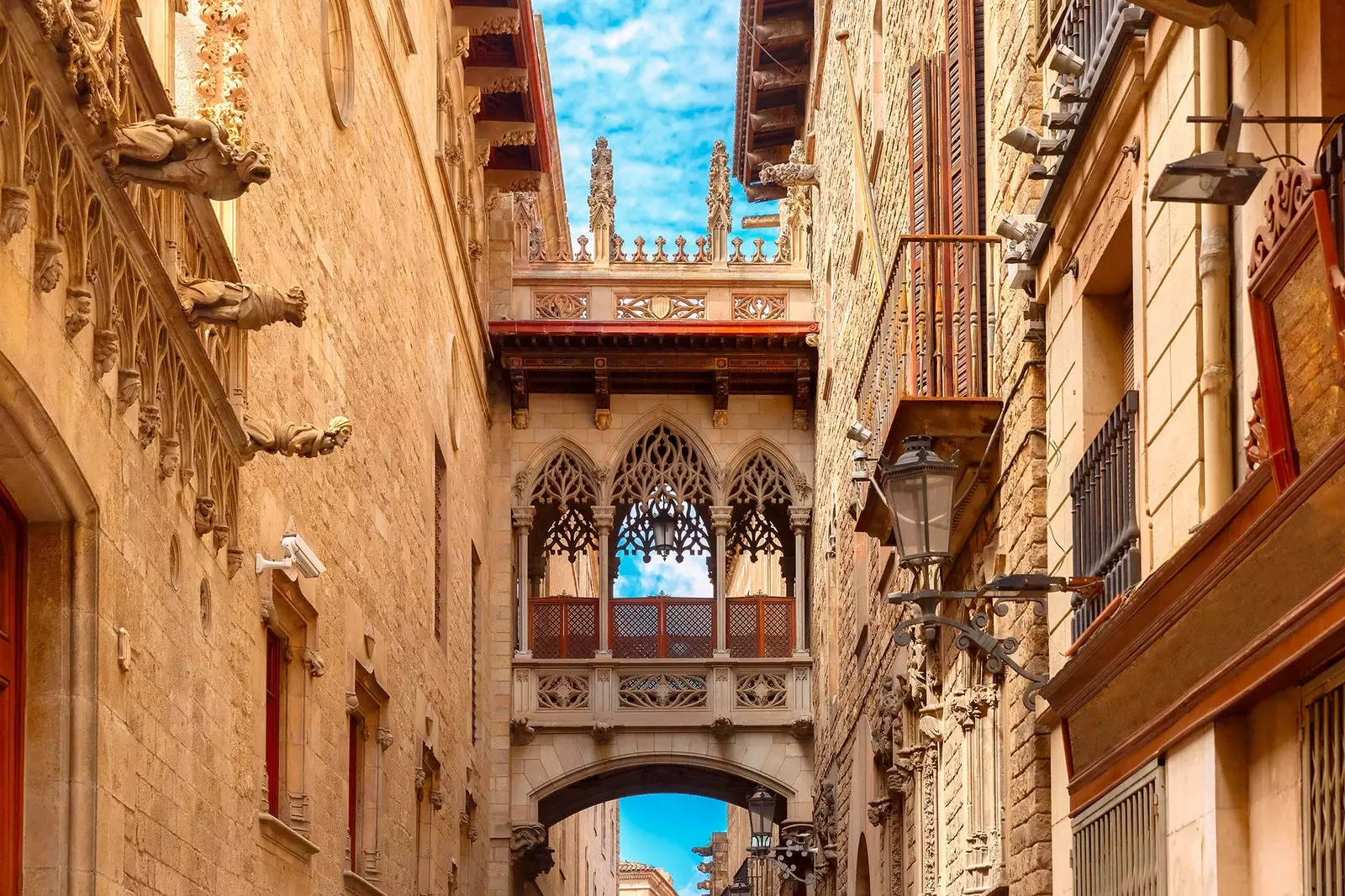
Medieval Barcelona: a trip back 700 years to the Ciudad Condal
The Middle Ages was one of the periods of greatest splendor of Barcelona. In the midst of a dark and feudal world, the city began to acquire its free and cosmopolitan spirit spurred by trade and wealth from all corners of the Mediterranean.
700 years later it is still easy to imagine and walk around the city as it was then. The stones of many facades of Barcelona have remained as silent witnesses to a story that most passers-by ignore in their daily routine.
The tour starts at Portal de l'Angel, whose name has no other origin than being one of the entrance gates in the city wall. To get an idea, the medieval wall of Barcelona followed the entire current perimeter of the Rondas de Sant Pere, Sant Pau and Sant Antoni, Pelai street, and then it closed towards the sea through El Born and the beginning of Paral.lel, including the Drassanes inside.
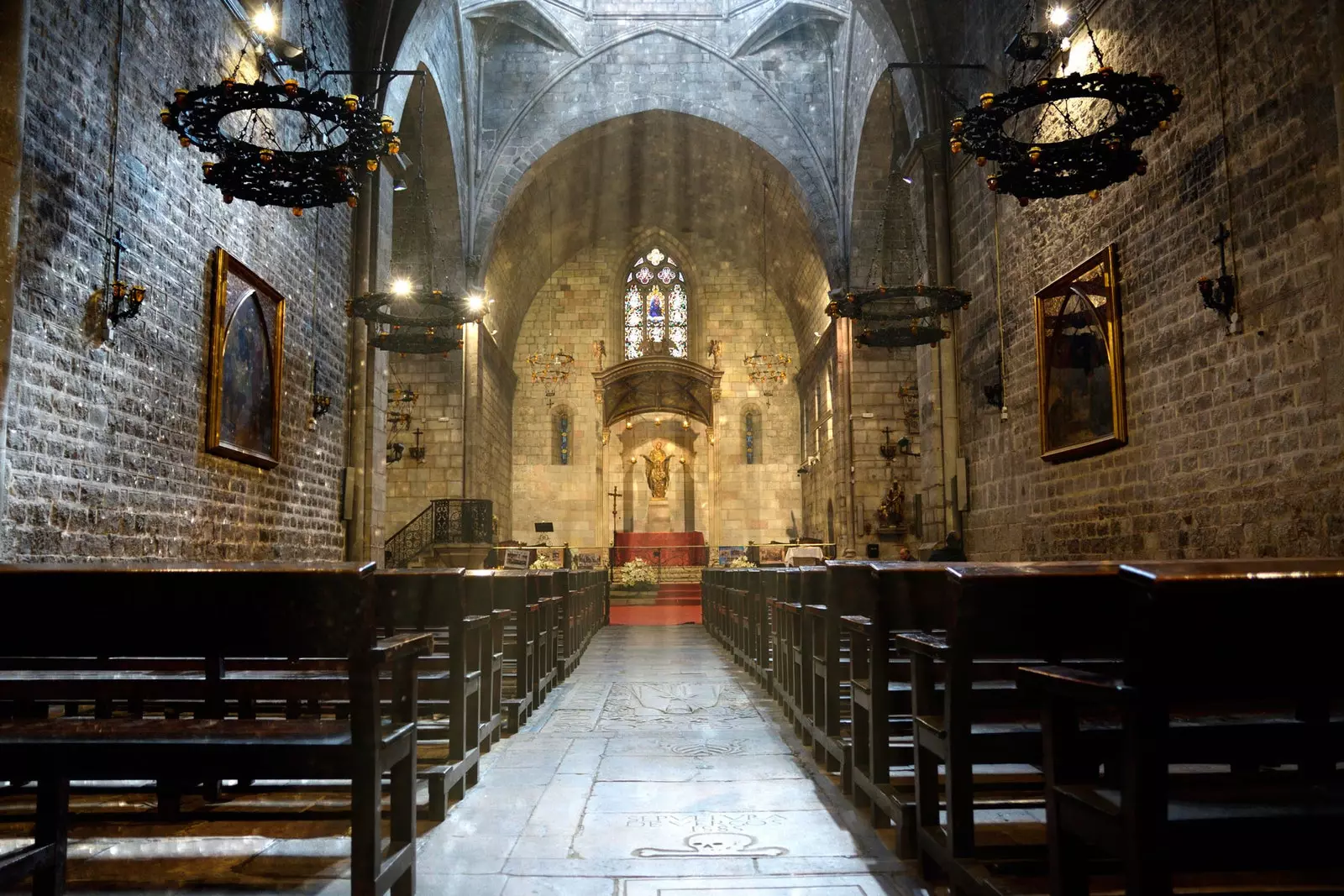
Interior of the parish of Santa Anna
Paseo de Gràcia was nothing more than a dirt road surrounded by fields (and so it was until the 19th century). Once inside the city, turn onto Calle de Santa Anna, and drowned by tall buildings, you will see the Ramón Amadeu square, with the Santa Anna Parish, a 12th-century monastery linked to the Order of the Holy Sepulcher of Jerusalem.
At present, the church maintains different social activities, above all, shelter for young foreigners in a vulnerable situation. It is a good start to remember that Barcelona in the 14th and 15th centuries was a multicultural city, where Christians, Jews and Muslims lived together. as well as races of different peoples of the Mediterranean.
as it happens today, many who came from abroad were second-class citizens or disenfranchised, even slaves brought by force after the numerous wars waged by the Crown of Aragon.
the route continues going down Bertrellans street, to cross through the Plaza de la Villa de Madrid, where there are some remains of Roman tombs. The Roman city is another jewel of Barcelona, but it is not as easy to imagine as the medieval city, of which dozens of intact buildings and the layout of the streets are preserved.
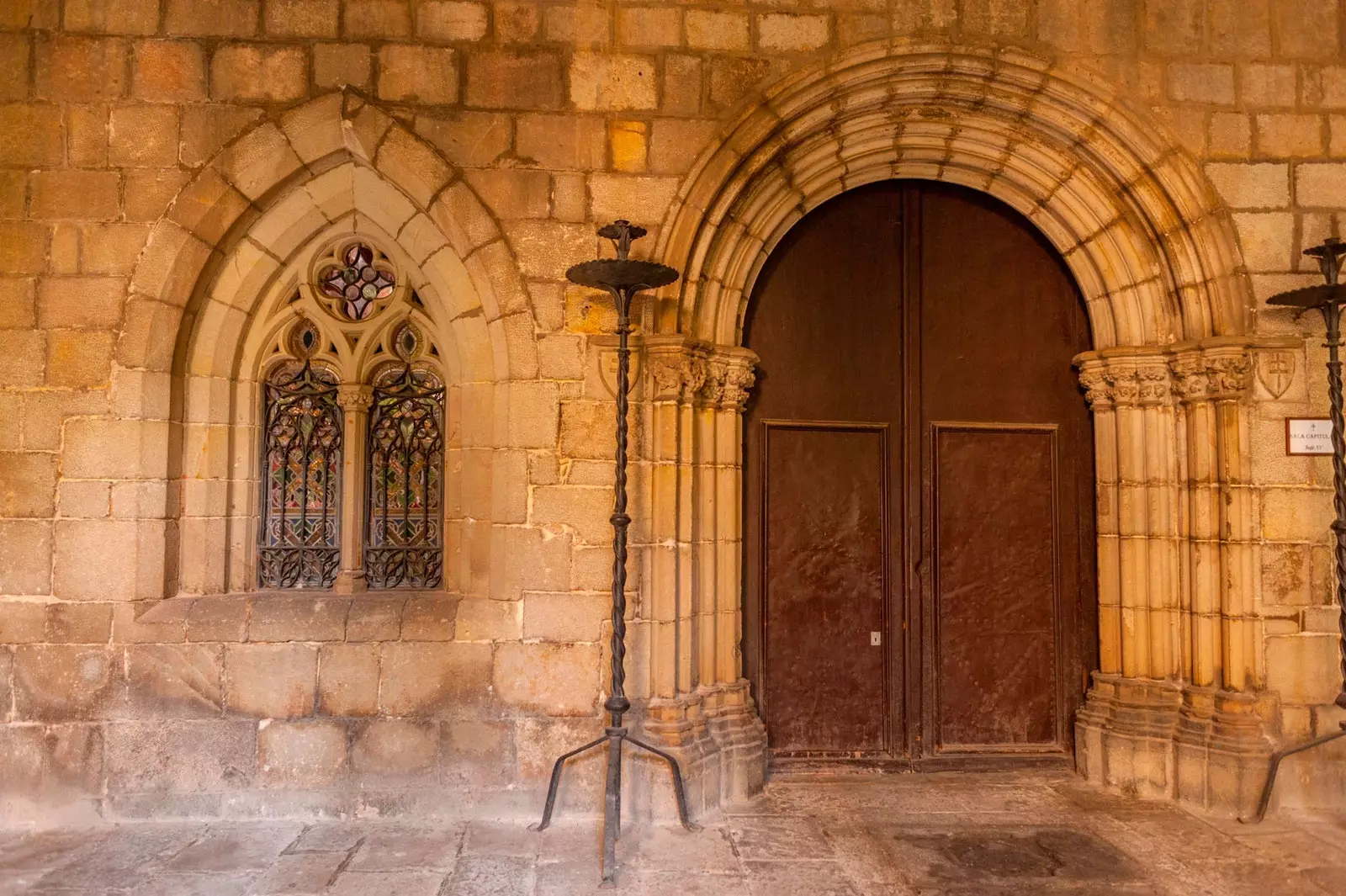
Door of the parish of Santa Anna
After Go down Calle d'en Bot to Portaferrissa, where you have to approach La Rambla , on the right. there it is a tile mural representing another of the gates of the first medieval wall, that ran all along La Rambla towards the sea.
This emblematic street in Barcelona, where thousands of tourists pass today, was a natural stream of mud and grass. King Peter the Ceremonious extended the wall on this side, enclosing what is the current Raval neighborhood, which remained almost without buildings for hundreds of years.
Going back through Portaferrissa, turns into Petritxol street, where you can stop for breakfast in La Pallaresa, a mythical place of chocolate with churros.
Continuing along Petritxol, you reach the Basilica of Santa María del Pi, from the 14th century, in which you have to be amazed by the lights that its spectacular rose window projects inside. The path continues along Calle de n'Alsina to Calle de la Boquería (another of the old gates of the first medieval city), which at the time was full of taverns.
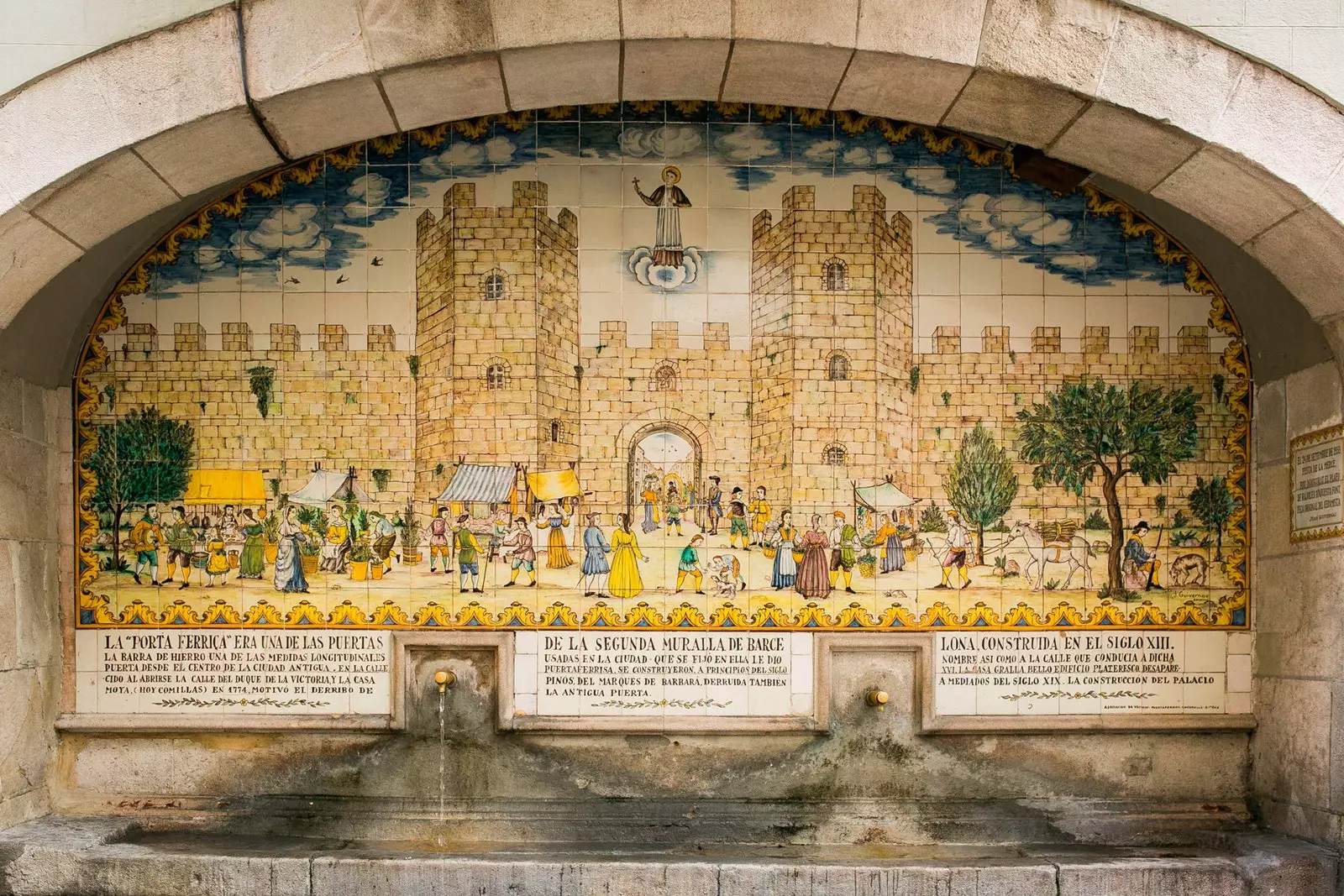
The tile mural at Portaferrissa represents another of the gates of the first medieval wall
By Calle de l'Arc de Santa Eulàlia, where the Romans had imprisoned the patron saint of Barcelona, you reach Ferran street. there's the church of Sant Jaume. The façade and the interior date back to medieval times, when it was built under the name of Santíssima Trinitat Parish. The shield above, with a Star of David, recalls that the temple was built by converted Jews who, in most cases, embraced Christianity to save their lives.
From Ferran, go up Avinyó to the beginning of Calle del Call. Above the classic Obach hat shop there is still a small window of what was once the Castell Nou, a fortification that was built after Almanzor sacked the city. The Castell Nou became one of the entrances to the Jewish quarter of Barcelona and within its walls one of the most terrible persecutions against the Jews took place in the year 1391.
The Jewish quarter was isolated from the rest of the city, as can still be seen on one of the façades on Calle del Call: the remains of a stone arch remind us that there was a door that closed off the street. The same thing happened at other ends of the neighborhood. The tour continues through Carrer de l'Arc de Sant Ramon del Call, on whose corner you can stop to try one of the incredible coffee variants at Satan's Coffee Corner.
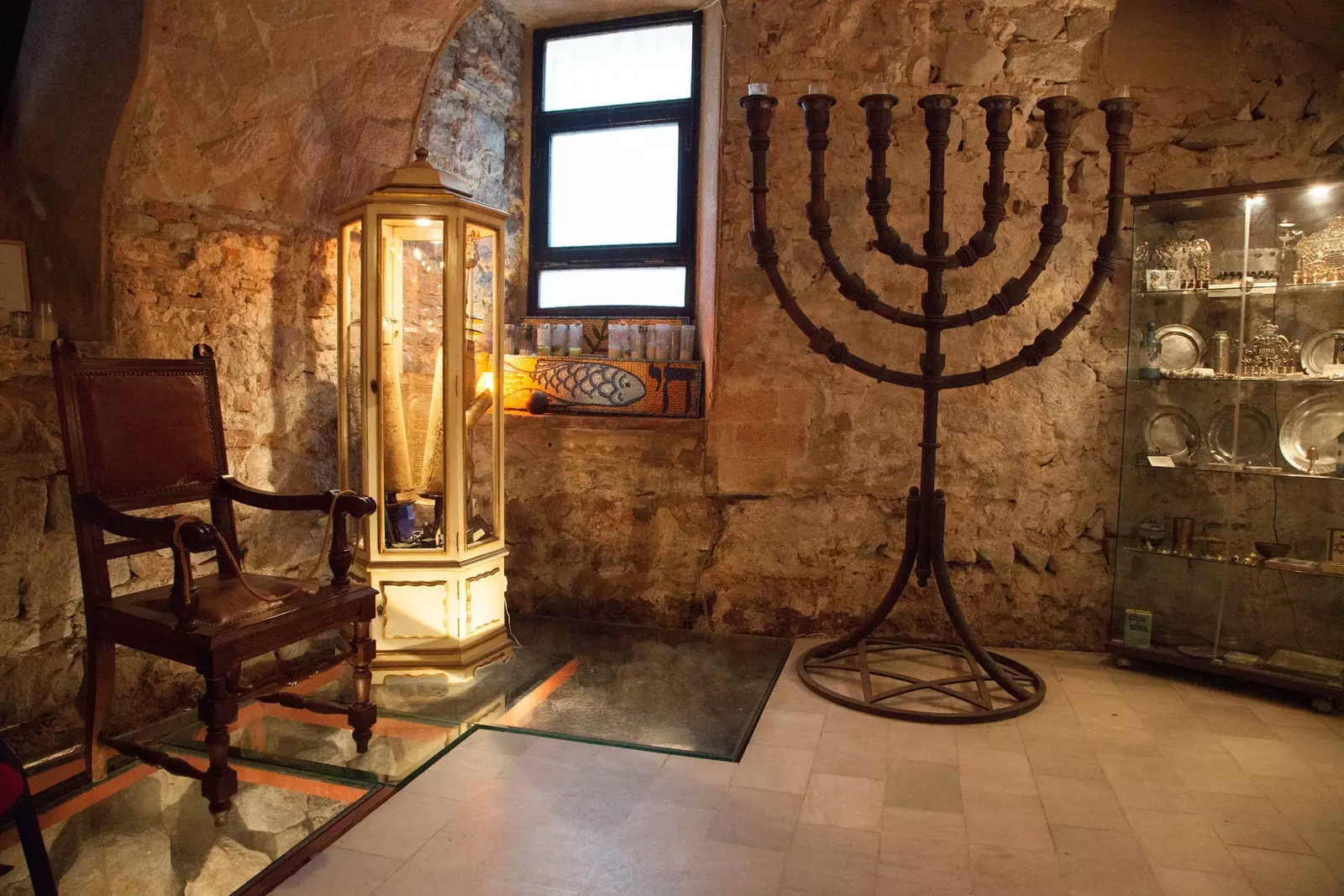
Greater Synagogue of Barcelona, one of the oldest in Europe
From there it goes to Salomó ben Adret street, which at its intersection with Marlet street, if you look up, you can see palaces of the fourteenth century Jews. Many Jews of the time were learned scholars and their business skills made them amass fortunes. at the same crossroads the old synagogue, dating from the 3rd century. There is also the IdeaBar, the best place to end the night if you take the tour in the afternoon, with live music on Fridays.
The route continues along Carrer de la Fruita and then through Sant Honorat, passing through the medieval facade of the Palace of the Generalitat. Via Sant Sever you come to Calle del Bisbe, where you have to look out over the courtyard of the archbishop's palace, which is preserved as it was in medieval times, when it was also the seat of religious power. Its on the side the Plaza de la Catedral, a must-see.
Don't be fooled by its impressive Gothic façade, which was not built until the end of the 19th century. In fact, until then it was an almost flat wall and it is highly likely that its noble entrance was on the side of Carrer dels Comptes, where the tower stands.
The Cathedral was built by the king and the Church, as a symbol of the power of both institutions. An example of this is the open cloister with palm trees, fountains and numerous architectural details.
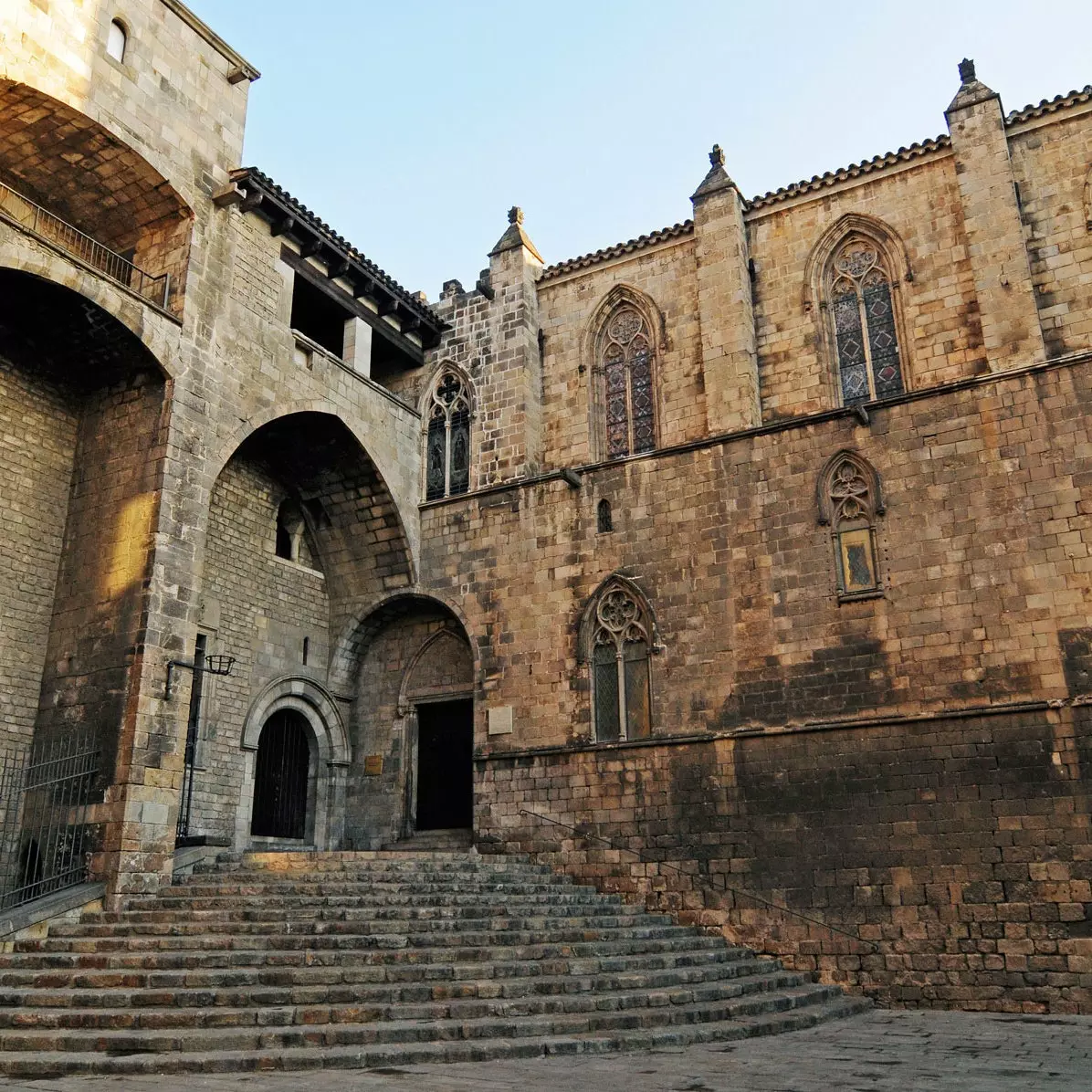
The Plaza del Rei, where the old palace of the kings of Aragon is located
We continue along Carrer de la Pietat until the Plaza del Rei, where the old palace of the kings of Aragon is located. During the Crown of Aragon, this building was used to house the king when he came to Barcelona, where he dispatched in the Tinell room (what would be a throne room). Inside the palace is also the Barcelona History Museum and the royal chapel of Santa Àgueda.
The tour continues along Carrer del Veguer to Jaume I, where you can go to Plaça de Sant Jaume and see the old entrance to the town hall on Carrer de la Ciutat. Then it was called Casa de la Ciutat and there the Council of One Hundred met , an institution formed by representatives of the guilds and different great men who governed the city.
Returning to Plaça Sant Jaume, it can be seen on Calle del Bisbe the elevated arch of the Pont del Bisbe, which connects the current Palace of the Generalitat with other buildings. Arches like this were common throughout the city so that the upper echelons could move around it without stepping on the mud of the streets through which the rest passed.
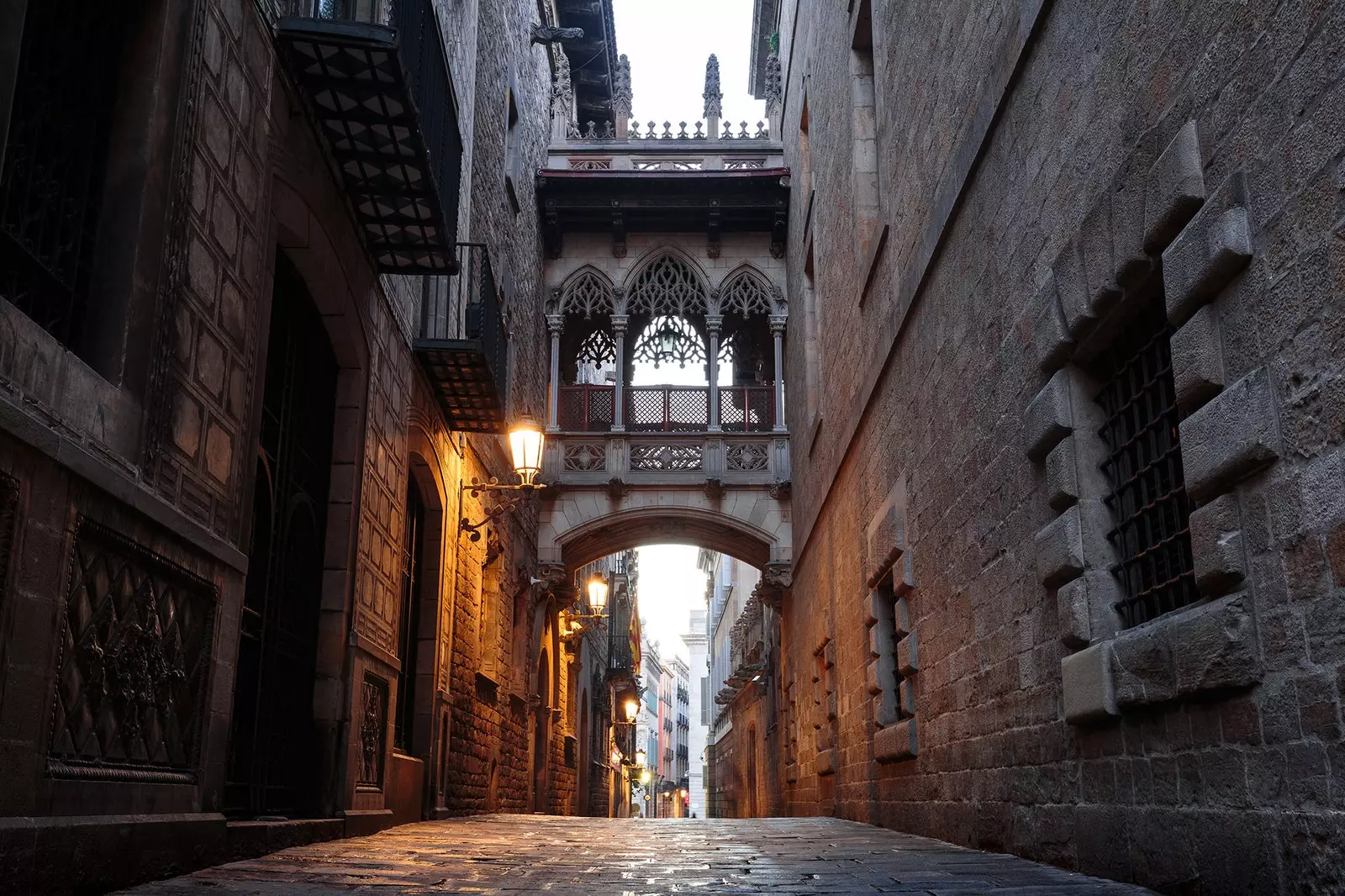
The Pont del Bisbe, in the Gothic Quarter
Through the Baixada de la Llibretería you get to Plaça de l’Àngel, formerly known as Plaça del Blat and where prisoners sentenced to death were executed in the worst ways imaginable. The Via Laiteana breaks the layout of alleys of the time, which is crossed to go down, by the street of l'Argenteria, until the monumental Santa María del Mar.
If the Cathedral was built by the king and the Church, the town built its own cathedral throughout the 13th century, with stones brought on its back from the Montjuïc mountain. If one looks closely at the small sculptures on the capitals of its entrance porch, The bastaixos who built the temple are portrayed, directed by the architect Berenguer de Montagut, also architect of the Cathedral of Palma.
Leaving Santa María, you reach the Paseo del Born, an old market in the Ribera neighborhood, which was then populated by sailors. The long square was also used to hold medieval knight tournaments.
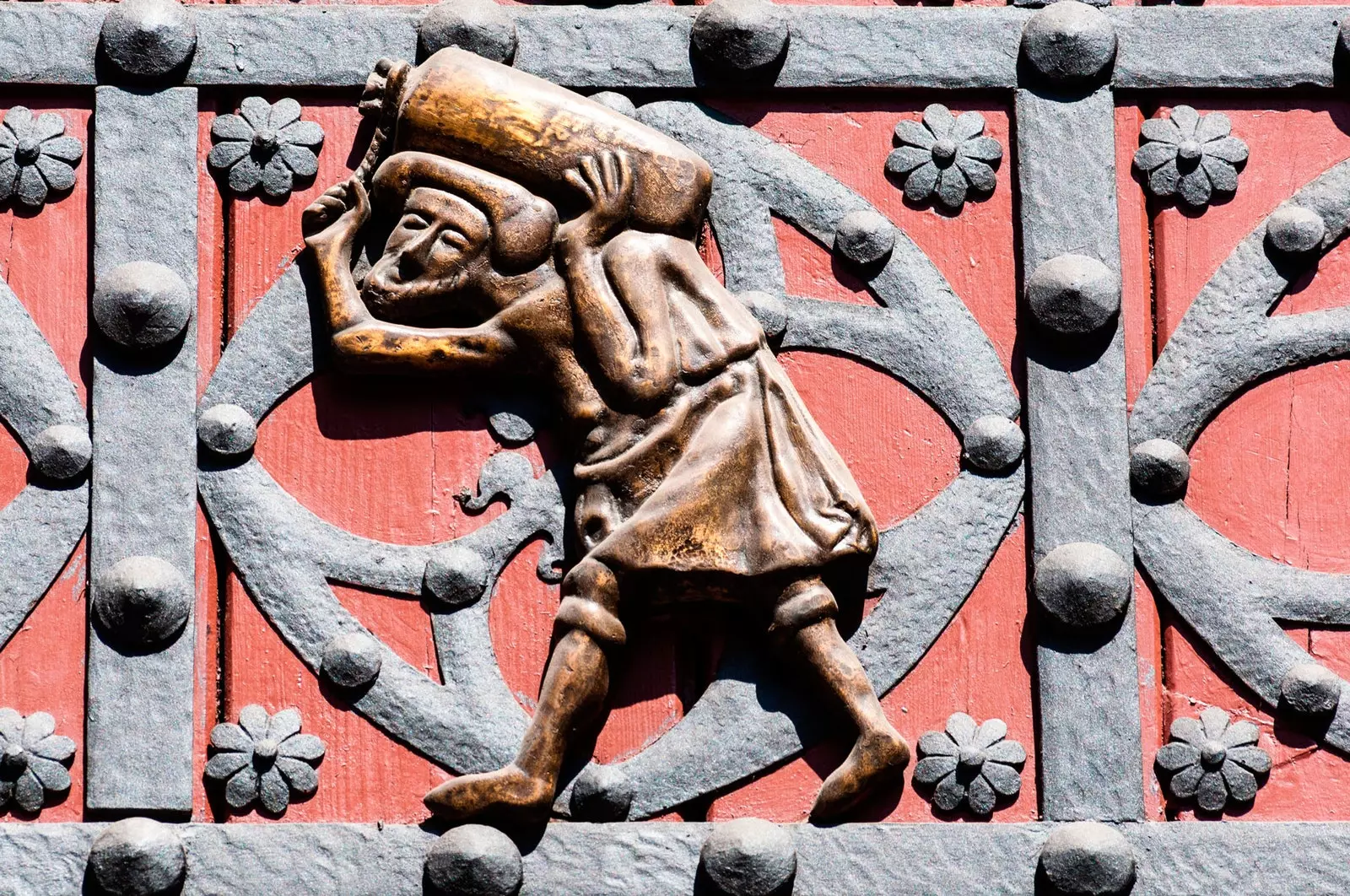
The bastaixos, detail of the main door of Santa María del Mar
on the left is Montcada street, where you can see the open patios of the palaces of the patricians of Barcelona from the 14th and 15th centuries. This street would then become the current Pearson avenue in Barcelona.
After the long walk, the route can be closed in Sagas, where you can find some of the best sandwiches in Barcelona, in the Pla de Palau. And if you still have strength in your legs, you can return at another time to visit the Drassanes, also founded in medieval times and now the Barcelona Maritime Museum.
Another interesting visit is the old Hospital de la Santa Creu in the street of the hospital, in the Raval. It was one of the most important hospitals in Europe and has been perfectly preserved since it was built just over 600 years ago.
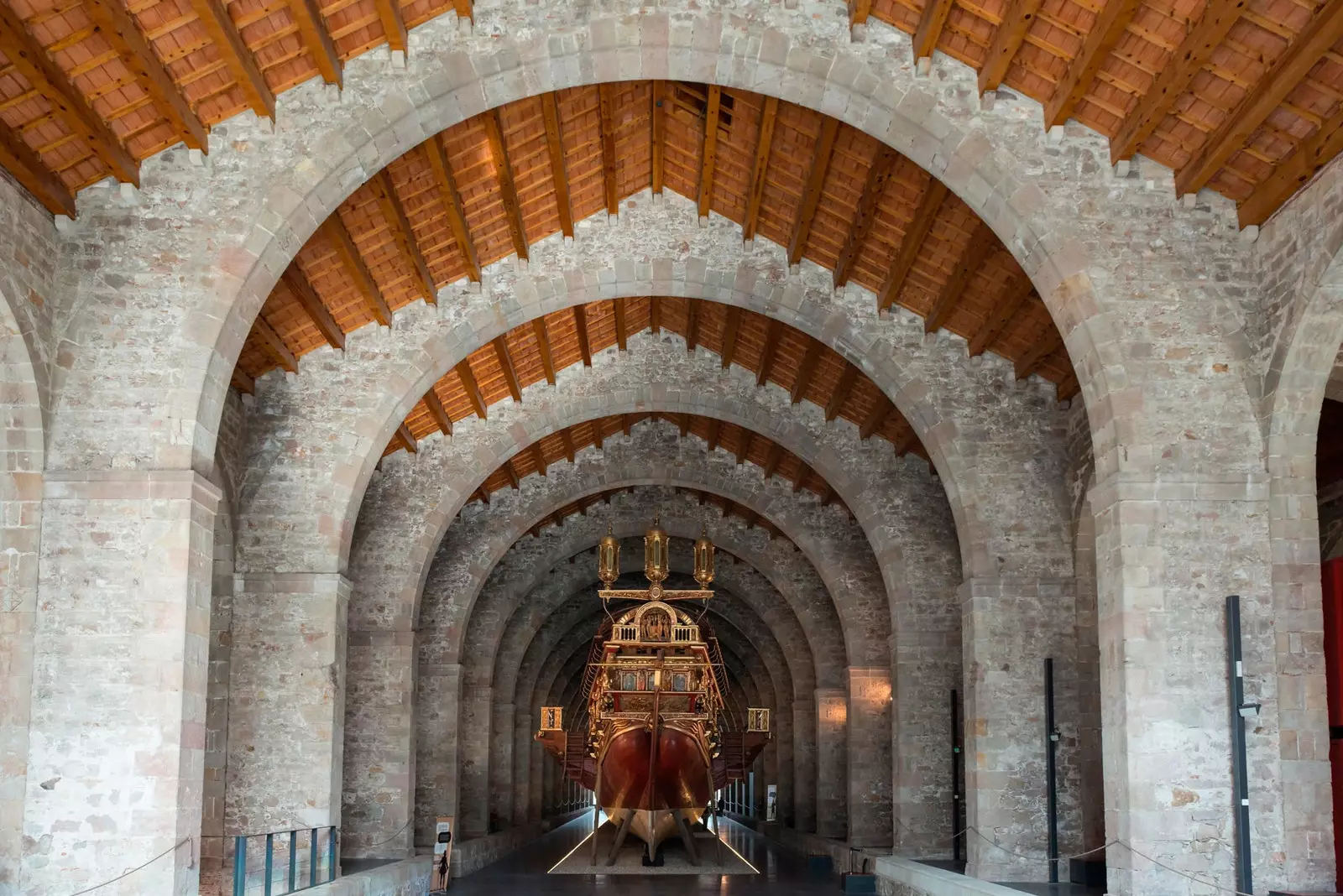
Las Drassanes Reials, headquarters of the Barcelona Maritime Museum
